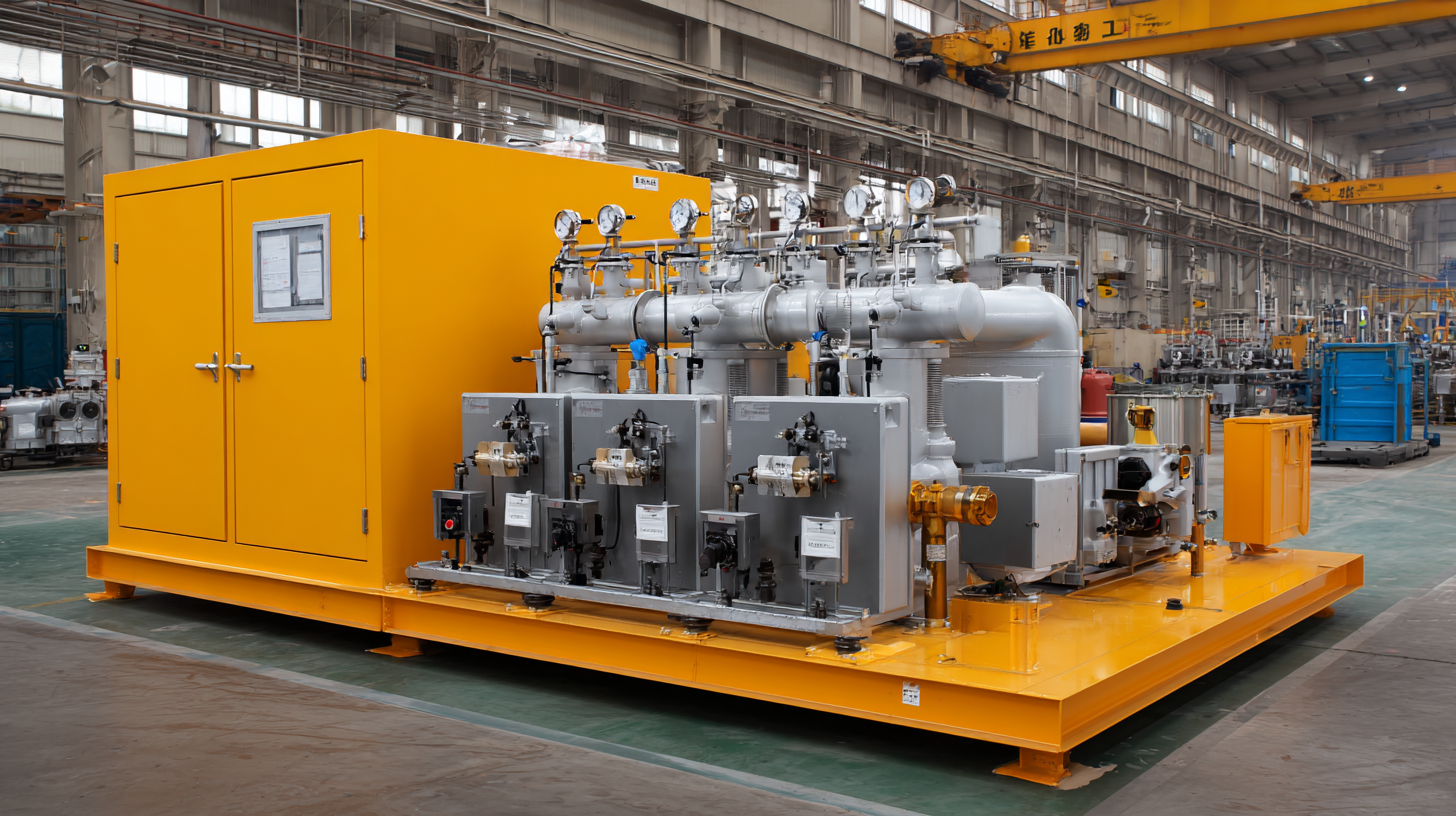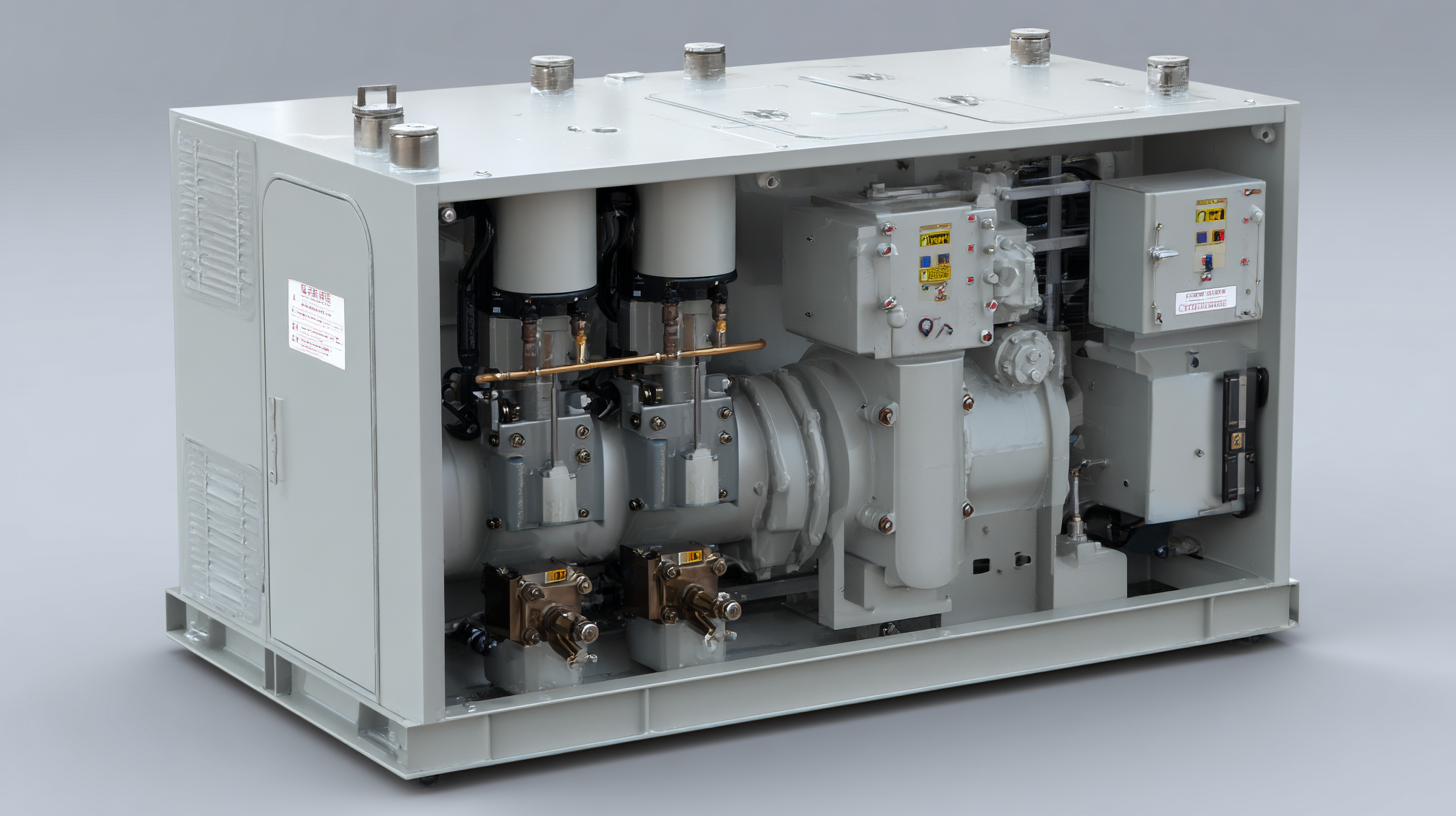International Fluid Power Inc.
International Fluid Power - Innovative Partners For Global Sourcing Of Fluid Power Products. Your Complete Hydraulic Source in SE Minnesota.
INTERNATIONAL FLUID POWER, INC.
5 Key Industry Standards That Define the Best Diesel Hydraulic Power Packs
In the ever-evolving world of heavy machinery, the Diesel Hydraulic Power Pack stands out as an essential component for a variety of industries, including construction, mining, and agriculture. According to a recent report by Research and Markets, the global hydraulic power pack market is projected to reach $8.5 billion by 2026, driven largely by increased demand for efficient power solutions. The performance and reliability of these power packs hinge on adherence to key industry standards. As businesses prioritize efficiency and sustainability, understanding these standards—such as ISO 9001 for quality management and SAE J1171 for safety—becomes critical. This blog explores the five key industry standards that define the best Diesel Hydraulic Power Packs, providing insights into how adherence to these benchmarks can enhance both operational efficiency and safety in the field.

Key Considerations for Choosing Diesel Hydraulic Power Packs in 2025
As industries continue to evolve, the need for efficient and reliable diesel hydraulic power packs becomes increasingly paramount. In 2025, key considerations for selecting the right diesel hydraulic power pack will hinge on several critical factors, including power output, fuel efficiency, and compliance with evolving environmental standards. According to a report by MarketsandMarkets, the global hydraulic power market is projected to reach $46.1 billion by 2025, indicating a growing demand for systems that not only deliver substantial performance but also adhere to stricter regulations.

When evaluating diesel hydraulic power packs, it is essential to assess their energy consumption metrics. Industry data suggests that modern power packs are designed to achieve a fuel efficiency improvement of up to 20% compared to older models. This improvement not only reduces operational costs but also minimizes the environmental impact, aligning with global efforts to transition towards more sustainable practices. Furthermore, manufacturers must ensure that their products meet the ISO 14001 environmental management standards, which have become increasingly relevant as businesses commit to reducing their carbon footprints. These considerations will ultimately guide operators in making informed decisions that align with both operational needs and environmental responsibilities in the coming years.
Emerging Technologies Shaping the Future of Hydraulic Power Systems
The hydraulic power systems industry is continuously evolving, driven by emerging technologies that enhance performance and efficiency. One of the most significant advancements is the integration of IoT (Internet of Things) capabilities into hydraulic power packs. By incorporating sensors and connectivity, these systems can provide real-time data on performance metrics, enabling operators to monitor and optimize operations in ways that were previously inconceivable. This technology not only improves system reliability but also facilitates predictive maintenance, ultimately reducing downtime and operational costs.
Another focal point in the evolution of hydraulic power systems is the adoption of advanced materials and manufacturing techniques. Innovations such as 3D printing are revolutionizing how components are produced, allowing for lighter, stronger parts that can withstand higher pressures. Additionally, the use of environmentally friendly fluids and smart hydraulic components are addressing sustainability concerns, adhering to industry standards while minimizing the ecological footprint. These trends indicate a promising future, where diesel hydraulic power packs can operate more efficiently and sustainably, responding adeptly to both market demands and environmental regulations.
Essential Safety Standards for Diesel Hydraulic Power Packs
When it comes to diesel hydraulic power packs, safety is paramount. Manufacturers and users alike must adhere to essential safety standards that ensure both operational efficiency and workplace protection. These standards often include guidelines on noise levels, emissions, and mechanical integrity, which collectively promote a safer working environment and reduce the risk of accidents.
One of the key aspects of these safety standards is the adherence to ISO and ANSI regulations, which outline performance criteria and safety measures. These regulations dictate that diesel hydraulic power packs must be equipped with safety devices such as pressure relief valves and emergency shut-off mechanisms. Furthermore, regular maintenance checks are encouraged, ensuring the equipment operates within the defined safety parameters. By implementing these crucial safety standards, users can significantly mitigate risks while maximizing the reliability of their hydraulic systems.
Comparative Analysis of Diesel vs. Electric Hydraulic Power Solutions
When comparing diesel and electric hydraulic power solutions, it's essential to consider their respective advantages and limitations in various industrial applications. Diesel hydraulic power packs are renowned for their high power output and efficiency in remote or off-grid locations. Their ability to run continuously without the need for external power sources makes them an ideal choice for heavy-duty tasks. However, they often come with higher operating costs due to fuel consumption and the need for regular maintenance of diesel engines.
On the other hand, electric hydraulic power solutions are increasingly favored for their environmental benefits and lower operational noise levels. They are more suitable for indoor applications, where emissions and space constraints are significant factors. Electric systems generally offer lower running costs and require less maintenance since they rely on fewer moving parts. As industries shift towards more sustainable practices, the choice between diesel and electric power is becoming a critical consideration, pushing manufacturers to innovate and adapt their product offerings to meet evolving standards and customer demands.

Sustainability Trends Impacting Hydraulic Equipment Design in 2025
As we move towards 2025, sustainability is becoming a pivotal factor in the design and manufacturing of hydraulic equipment, including diesel hydraulic power packs. With increasing regulations and consumer demand for eco-friendly solutions, manufacturers are compelled to innovate. This involves not only improving fuel efficiency but also integrating renewable energy sources into traditional diesel systems. The aim is to minimize environmental impact while maintaining power and efficiency, which requires a rethinking of design standards and materials used in construction.
Moreover, the trend towards circular economy principles is influencing hydraulic equipment development. Manufacturers are exploring ways to design power packs that are easier to recycle and repurpose at the end of their life cycle. This involves using sustainable materials that offer durability while reducing the overall carbon footprint of production processes. Additionally, advancements in digital technology allow for better monitoring of equipment performance, enabling predictive maintenance and longer life spans for products. By aligning with sustainability trends, companies can not only comply with emerging regulations but also position themselves as leaders in an environmentally conscious market.
5 Key Industry Standards That Define the Best Diesel Hydraulic Power Packs
| Standard | Description | Impact on Design | Sustainability Trend |
|---|---|---|---|
| ISO 4406 | Standards for hydraulic fluid contamination | Promotes cleaner operation and better maintenance | Minimizing waste and maximizing operational efficiency |
| SAE J1176 | Fuel-efficient hydraulic systems | Encourages the adoption of energy-efficient components | Reducing carbon footprint |
| EN 982 | Safety requirements for hydraulic systems | Improves safety features and operational protocols | Enhancing worker safety |
| ISO 12100 | Safety of machinery and risk assessment | Promotes a safer design philosophy | Sustainable design practices |
| API 610 | Standard for centrifugal pumps | Enhances efficiency in fluid delivery | Promoting energy-efficient operations |
You Can Find International Fluid Power Here:
Search For:
Footer #4 Widget
This is an example of a widget area that you can place text to describe a product or service. You can also use other WordPress widgets such as recent posts, recent comments, a tag cloud or more.
© 2025 International Fluid Power, Inc. All Right Reserved.